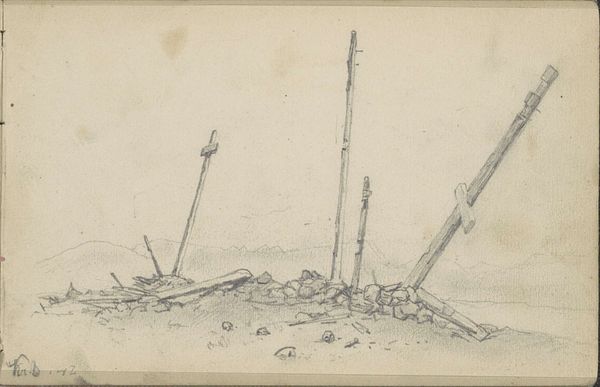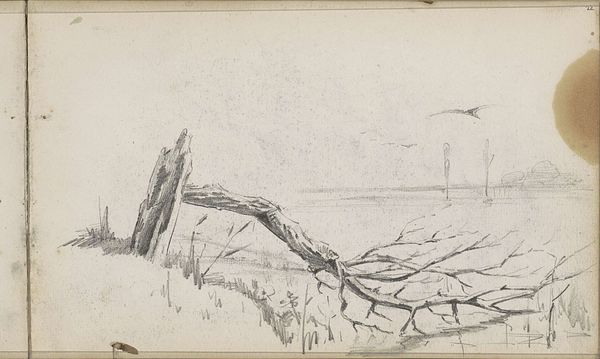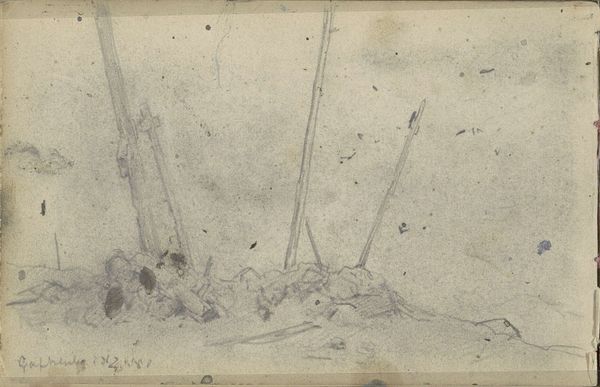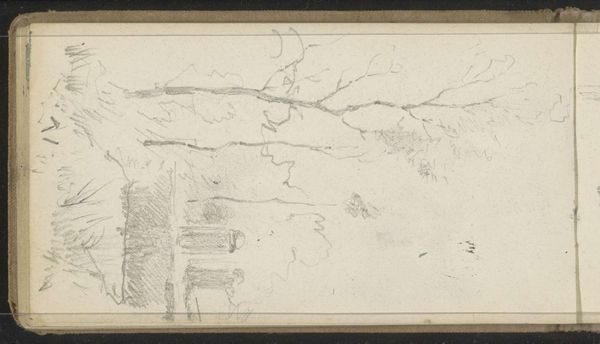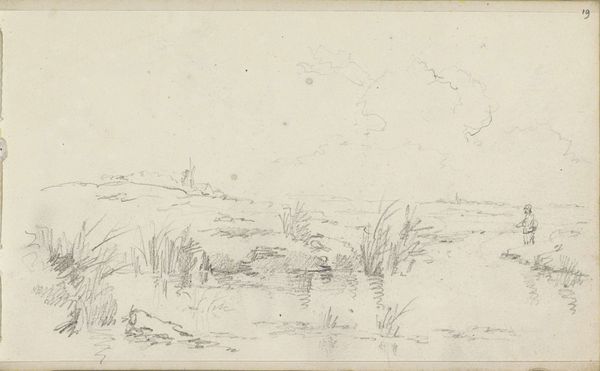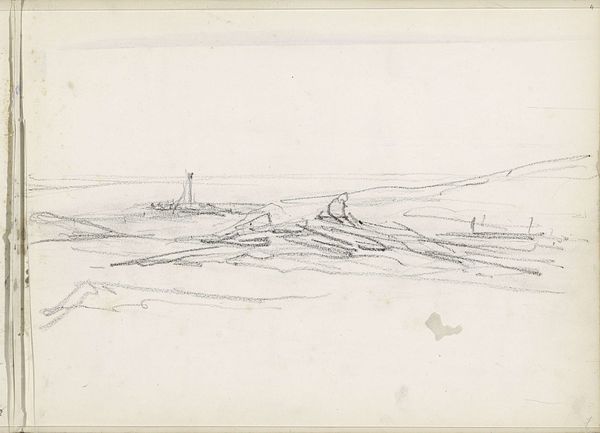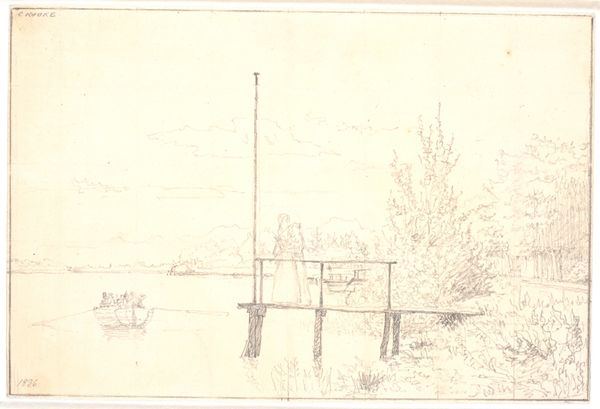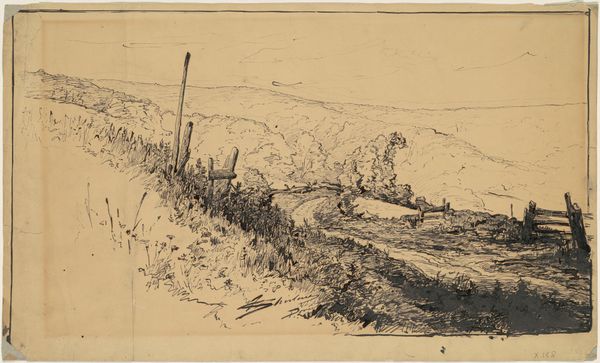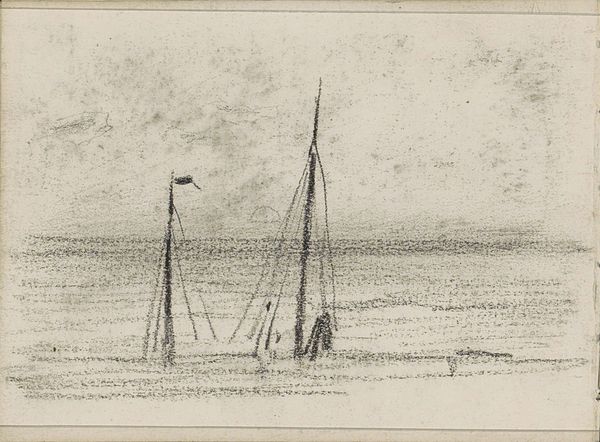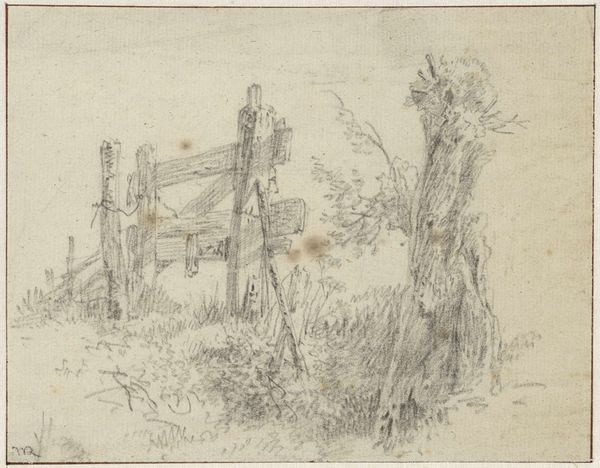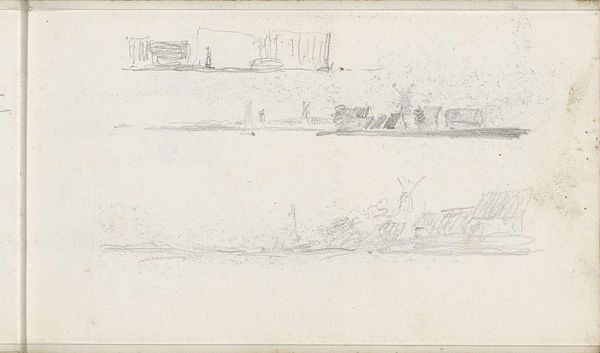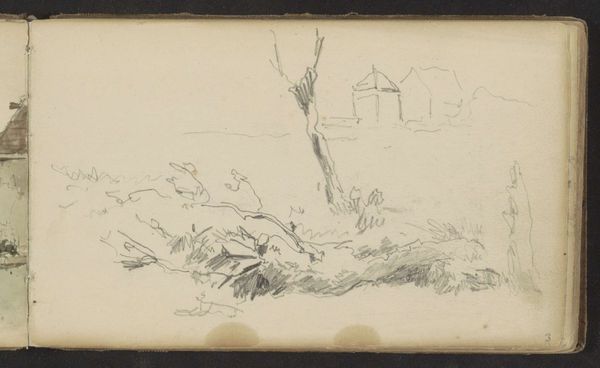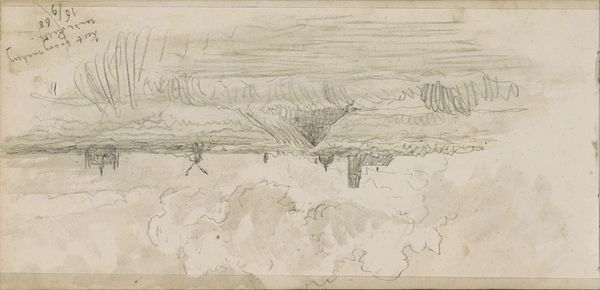
Vervallen Russische grafkruisen op Wrangeleiland in de Kruisbaai, Nova Zembla 1880
0:00
0:00
drawing, pencil
#
drawing
#
landscape
#
pencil
#
realism
Copyright: Rijks Museum: Open Domain
Editor: This is "Vervallen Russische grafkruisen op Wrangeleiland in de Kruisbaai, Nova Zembla," a pencil drawing by Louis Apol from 1880, housed in the Rijksmuseum. The scene feels incredibly stark and desolate. What stands out to me most is the fragility of those leaning crosses. What do you see in this piece? Curator: The power of the image resides precisely in the frailty you observe. The crosses, barely upright against a washed-out background, transcend their immediate representation as grave markers. Think about what a cross symbolizes: faith, hope, redemption. What does it mean when those symbols are broken or tilted? What happens to cultural memory when these physical embodiments decay? Editor: So, the physical decay mirrors a spiritual or cultural decline? Curator: Precisely. The crosses aren't just decaying wood; they're visual metaphors. They evoke the vulnerability of belief systems, and perhaps also speak to the transient nature of human endeavors in the face of nature’s overwhelming indifference. What are the connotations of “Russia” for you? How does that add layers? Editor: Russia makes me think of the vastness of the landscape, but also the power of the church. Curator: And what do you make of its arctic context? How might ice and cold shape those symbols of faith and nation? Editor: It is like the elements are taking everything back, eroding the cross back into dust. Curator: An apt observation! Consider, then, that Apol painted this almost a century before the gulags would mark these spaces of remote cold, loss, and death. It seems almost prophetic, a landscape where both life and faith find little purchase. It makes us ponder on memory and change. Editor: It gives a whole new appreciation to the work when viewed as not only landscape, but also cultural commentary and visual foreshadowing. Thanks for pointing this out.
Comments
No comments
Be the first to comment and join the conversation on the ultimate creative platform.
